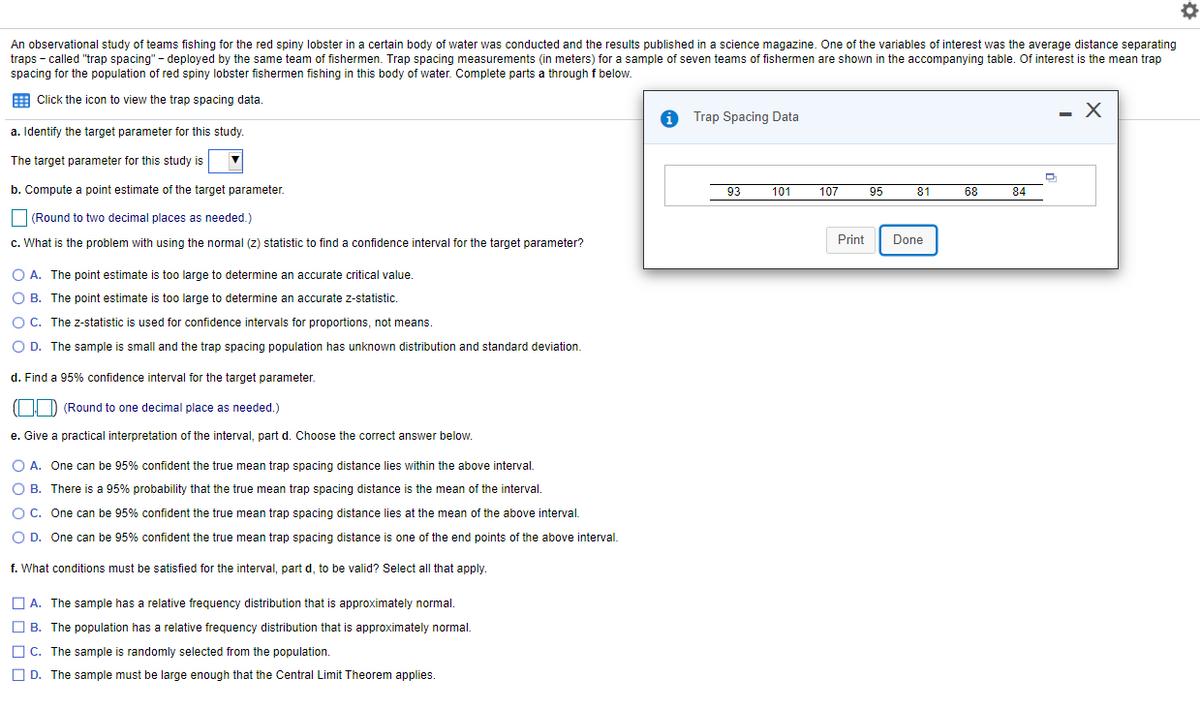n observational study of teams fishing for the red spiny lobster in a certain body of water was conducted and the results published in a science magazine. One of the variables of interest was the average distance separating aps - called "trap spacing" - deployed by the same team of fishermen. Trap spacing measurements (in meters) for a sample of seven teams of fishermen are shown in the accompanying table. Of interest is the mean trap acing for the population of red spiny lobster fishermen fishing in this body of water. Complete parts a through f below. a Click the icon to view the trap spacing data. Trap Spacing Data Identify the target parameter for this study. ne target parameter for this study is Compute a point estimate of the target parameter. 93 101 107 95 81 68 84 (Round to two decimal places as needed.) What is the problem with using the normal (2) statistic to find a confidence interval for the target parameter? Print Done OA. The point estimate is too large to determine an accurate critical value. O B. The point estimate is too large to determine an accurate z-statistic. O C. The z-statistic is used for confidence intervals for proportions, not means. O D. The sample is small and the trap spacing population has unknown distribution and standard deviation. Find a 95% confidence interval for the target parameter. D (Round to one decimal place as needed.) Give a practical interpretation of the interval, part d. Choose the correct answer below. O A. One can be 95% confident the true mean trap spacing distance lies within the above interval.
Inverse Normal Distribution
The method used for finding the corresponding z-critical value in a normal distribution using the known probability is said to be an inverse normal distribution. The inverse normal distribution is a continuous probability distribution with a family of two parameters.
Mean, Median, Mode
It is a descriptive summary of a data set. It can be defined by using some of the measures. The central tendencies do not provide information regarding individual data from the dataset. However, they give a summary of the data set. The central tendency or measure of central tendency is a central or typical value for a probability distribution.
Z-Scores
A z-score is a unit of measurement used in statistics to describe the position of a raw score in terms of its distance from the mean, measured with reference to standard deviation from the mean. Z-scores are useful in statistics because they allow comparison between two scores that belong to different normal distributions.

Trending now
This is a popular solution!
Step by step
Solved in 2 steps


